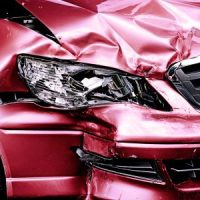What Are Event Data Recorders?

It is not uncommon for the parties involved in a car accident to blame each other for causing the crash. Unless there are independent eyewitnesses who saw the accident, or there is video from a dash camera or nearby security system, these situations can quickly become a battle of “he said, she said.” Accident victims who find themselves in this type of scenario have a couple of options, one of which may be to download data from the Event Data Recorders (EDRs) from both vehicles. These recordings can provide crucial insight into the cause of an accident, so if you were involved in a car crash, you should consider speaking with an experienced Fort Lauderdale auto accident lawyer who can walk you through the kinds of evidence that could strengthen your claim.
What are Event Data Recorders?
Event data recorders, or EDRs, are devices that are often installed in newer vehicles with the purpose of recording driver and vehicle performance in the seconds prior to, during, and after a crash. While initially installed in new model vehicles to provide manufacturers with data on crash events, so that they could enhance and tailor safety systems in the future, EDRs have become an important tool in proving fault after car accidents.
What do EDRs Record?
Vehicle manufacturers aren’t actually required to install EDRs in their vehicles, but those that do must collect certain data, including:
- Vehicle speed;
- Steering wheel angle;
- Accelerator position;
- Air bag deployment;
- Seat belt use; and
- Brake application.
Typically, this information is recorded for the five seconds prior to, during, and after a collision. Fortunately, this is usually enough time to help prove what happened in a particular accident. Data from an EDR could, for instance, show whether one driver was speeding prior to the crash and how long it took that driver to react to the impending collision, which can help demonstrate that someone was distracted at the time of the accident.
Downloading EDR Data
EDR data is the property of the owner of the vehicle in which the device is installed. It can, however, be obtained by others, including car accident victims. To do so, the plaintiff will need to ask the owner for permission. If permission is denied, the claimant must ask a court to subpoena the records via a formal request. Once obtained, the data in these records can then be used to help prove that a driver was at fault for, or contributed to, a crash. It’s important to note, however, that not all crashes are captured by EDRs. Side swipe accidents, for instance, are usually not significant enough to trigger an EDR’s recording mechanism.
Contact Us Today to Learn More
At Boone & Davis, our experienced Fort Lauderdale car accident lawyers are dedicated to helping accident victims obtain the compensation that will help them move on with their lives. To learn more about the types of evidence that we use in car accident cases, including EDR data, please call us at 954-566-9919 today.
Resource:
nhtsa.gov/sites/nhtsa.gov/files/fmvss/EDR_QAs_11Aug2006.pdf
